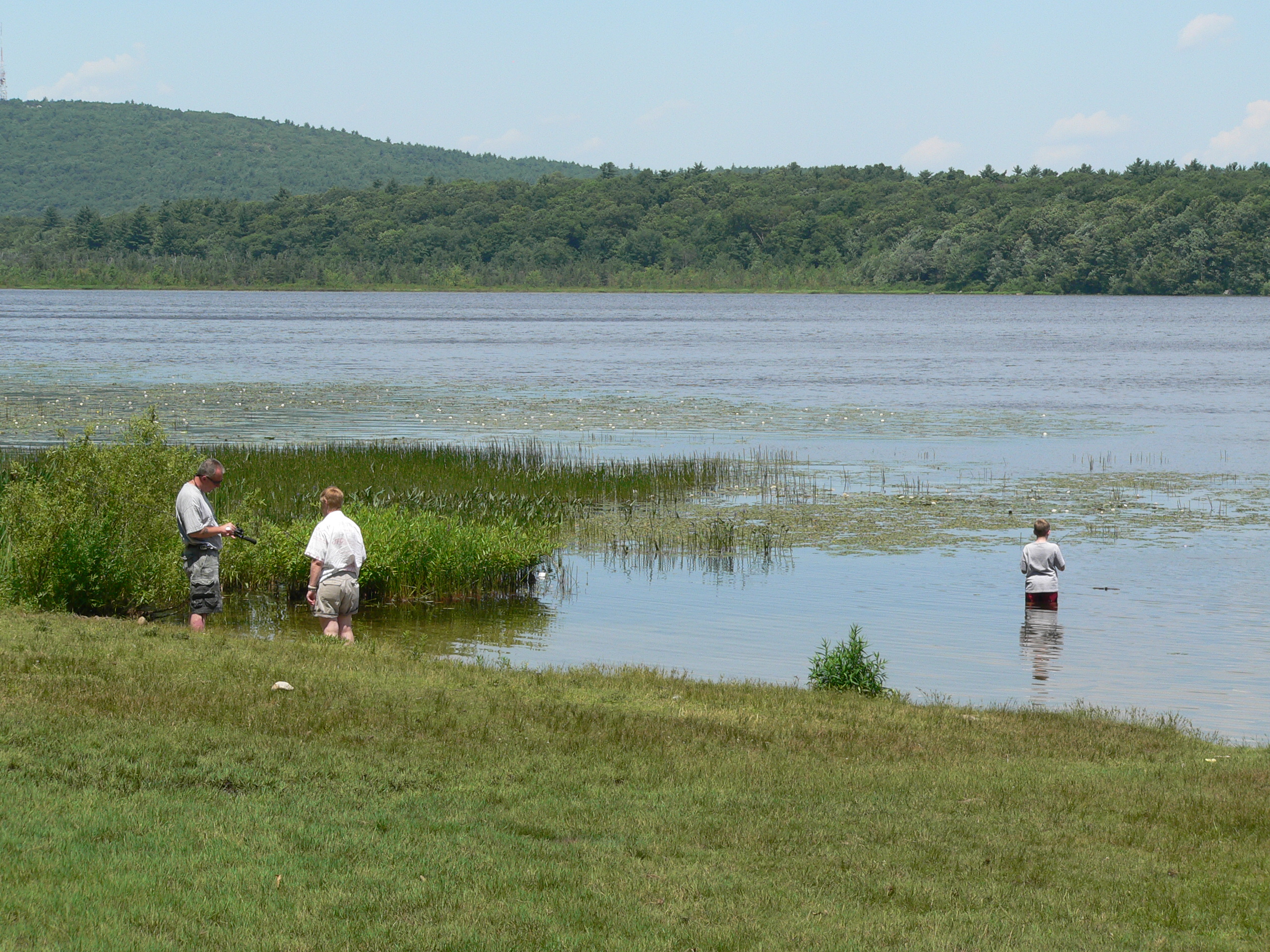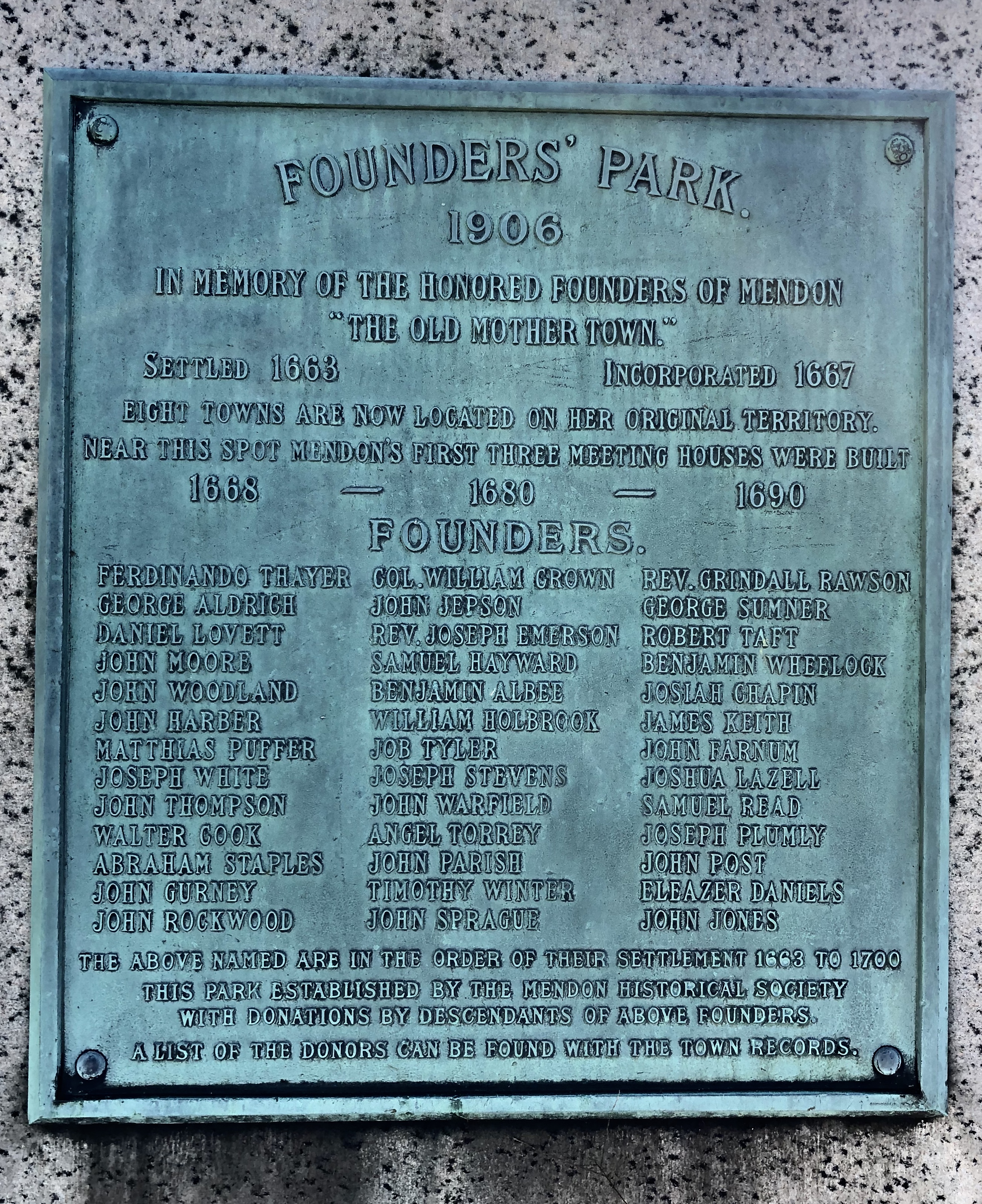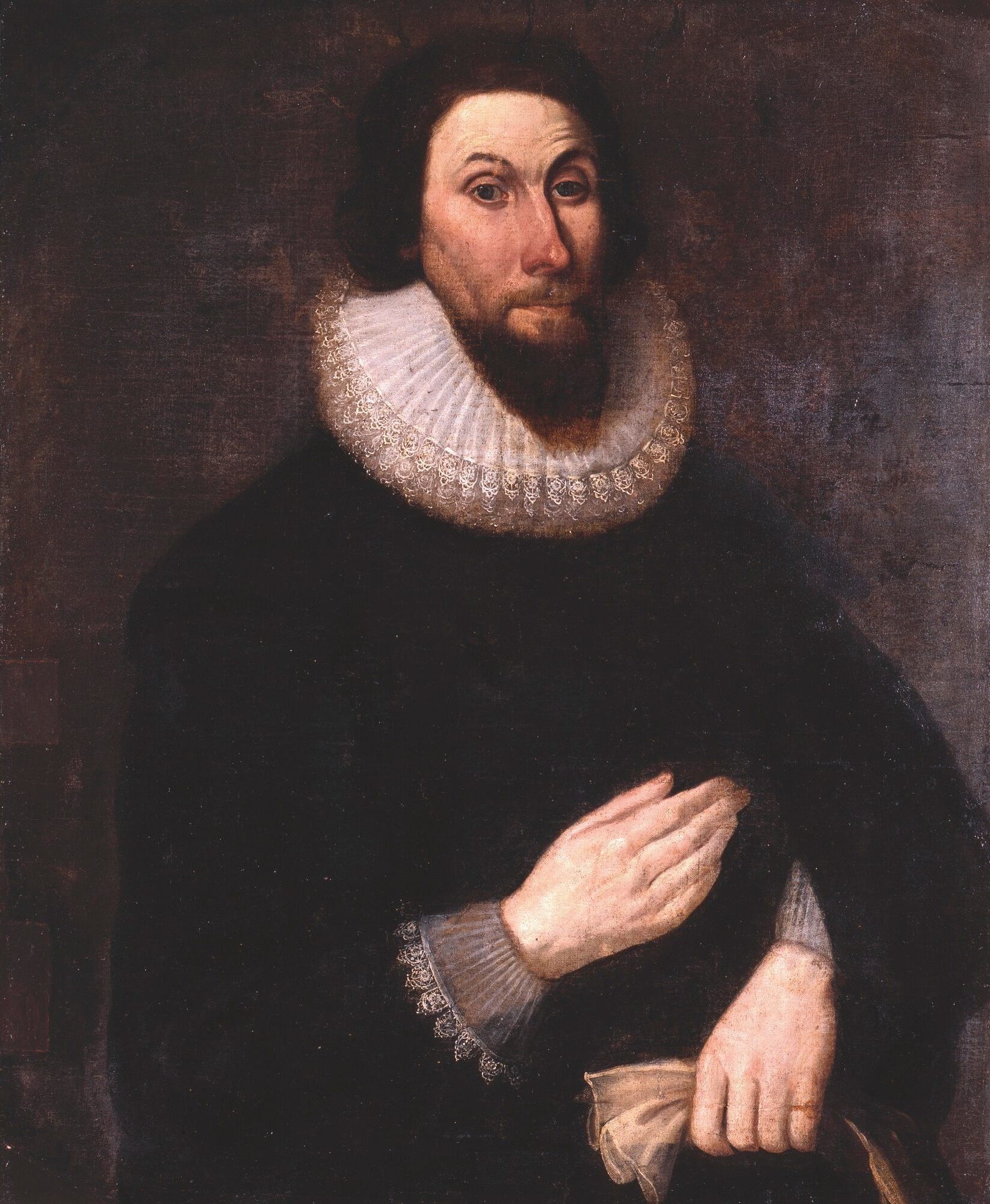|
Ponkapoag
Ponkapoag , also Punkapaug, Punkapoag, or Punkapog, is the name of a Native American "praying town" settled in the late 17th century western Blue Hills area of eastern Massachusetts by persons who had accepted Christianity. It was established in 1657, during the colonization of the Atlantic seaboard of the United States by settlers from Britain. This was the name given to the winter residence (and subsequently to the tribe) of the group of Massachusett who lived at the mouth of the Neponset River near Dorchester in the summer, in what colonists called Neponset Mill. Ponkapoag is now contained almost entirely by the town of Canton, Massachusetts. The name is derived from a nearby pond south of Great Blue Hill; Ponkapoag means "shallow pond" or "a spring that bubbles from red soil". History Ponkapoag Plantation was established in 1657 as a town parcel formed from Dorchester, Massachusetts Bay Colony. It was the second Christianized native settlement, or "Praying Town" in ... [...More Info...] [...Related Items...] OR: [Wikipedia] [Google] [Baidu] |
Ponkapoag Pond
Ponkapag Pond is a 203-acre impoundment in the Blue Hills Reservation. The pond is located on the border of Canton and Randolph, Massachusetts about a half mile south of Route 128 and a half mile east of Route 138. It has a maximum depth of seven feet and an average depth of four feet. As would be expected on a pond this shallow, aquatic vegetation is pervasive and very abundant. Only a small portion of the eastern shoreline is developed; the southeastern and western shores are bordered by large expanses of marshland. A walking trail circles the pond, with parking at three locations. The name comes from a Native American word meaning ''a spring that bubbles up from red soil'', ''sweet water'', or ''shallow pond''. Camping The Appalachian Mountain Club Appalachian Mountain Club (AMC) is the oldest outdoor group in the United States. Created in 1876 to explore and preserve the White Mountains in New Hampshire, it has expanded throughout the northeastern U.S., with 12 chapte ... [...More Info...] [...Related Items...] OR: [Wikipedia] [Google] [Baidu] |
Massachusett
The Massachusett were a Native American tribe from the region in and around present-day Greater Boston in the Commonwealth of Massachusetts. The name comes from the Massachusett language term for "At the Great Hill," referring to the Blue Hills overlooking Boston Harbor from the south. As some of the first people to make contact with European explorers in New England, the Massachusett and fellow coastal peoples were severely decimated from an outbreak of leptospirosis circa 1619, which had mortality rates as high as 90 percent in these areas. This was followed by devastating impacts of virgin soil epidemics such as smallpox, influenza, scarlet fever and others to which the Indigenous people lacked natural immunity. Their territories, on the more fertile and flat coastlines, with access to coastal resources, were mostly taken over by English colonists, as the Massachusett were too few in number to put up any effective resistance. Missionary John Eliot converted the majority of ... [...More Info...] [...Related Items...] OR: [Wikipedia] [Google] [Baidu] |
Canton, Massachusetts
Canton is a town in Norfolk County, Massachusetts, Norfolk County, Massachusetts, United States. The population was 24,370 at the 2020 census. Canton is part of Greater Boston, about 15 miles (24 kilometers) southwest of downtown Boston. History The area that would become Canton was inhabited for tens of thousands of years prior to European colonization of the Americas, European colonization. The Paleo-Indians, Paleo-Indian site Wamsutta, Radiocarbon dating, radiocarbon dated to 12,140 years before present, is located within the bounds of modern day Canton at Signal Hill (Canton, Massachusetts), Signal Hill. At the time of the Puritan migration to New England (1620–1640), Puritan migration to New England in the early 1600s, Canton was seasonally inhabited by the Neponset band of Massachusett under the leadership of sachem Chickatawbut. From the 1630s to the 1670s, increasing encroachment by year-round English settlers on lands traditionally inhabited only part of the year, ... [...More Info...] [...Related Items...] OR: [Wikipedia] [Google] [Baidu] |
Blue Hills Reservation
Blue Hills Reservation is a state park in Norfolk County, Massachusetts in the United States. Managed by the Massachusetts Department of Conservation and Recreation, it covers parts of Milton, Quincy, Braintree, Canton, Randolph, and Dedham. Located approximately ten miles south of downtown Boston, the reservation is one of the largest parcels of undeveloped conservation land within the Greater Boston metropolitan area. The park's varied terrain and scenic views make it a popular destination for hikers from the Boston area. History European colonizers sailing the coastline noticed the bluish hue of the mountains, which is caused by the presence of riebeckite, which gave area its modern name. The name of the state of Massachusetts derives from the Massachusett Indian tribe's name of the hill: ''massa-adchu-es-et.'' In 1893, the Metropolitan Parks Commission purchased the lands of Blue Hills Reservation as one of the state's first areas dedicated to public recreation. The pra ... [...More Info...] [...Related Items...] OR: [Wikipedia] [Google] [Baidu] |
Quashaamit
Quashaamit (also known as William of Blewe Hills and William Minnian or William Awinian and Quashawannamut; prior to 1640/72) was a bilingual Praying Indian sachem or sub-sachem, and teaching minister, possibly affiliated with the Nipmuc, (Massachusett) and Wampanoag tribes. Quashaamit worked closely with Massasoit, Metacomet, Wamsutta, and Wompatuck, Wampatuck and deeded large tracts of land to early settlers in what is now Massachusetts and Rhode Island. Quashaamit lived near Great Blue Hill and was a resident of Ponkapoag, a Praying town, which was founded in 1657 after the Indians were removed from their traditional lands on the Neponset River near what is now the Neponset River Reservation. Quashaamit (William Awinian) served as an Indian preacher in Ponkapoag from 1656 until his death sometime between 1670 and 1672. Quashaamit was acquainted with Rev. John Eliot (missionary), John Eliot who translated the first Bible into a Native American language, and in 1662 Eliot helped Qu ... [...More Info...] [...Related Items...] OR: [Wikipedia] [Google] [Baidu] |
Unrecognized Tribes
Unrecognized tribes in the United States are organizations of people who claim to be historically, culturally, and/or genetically related to historic Native American Indian tribes but who are not officially recognized as Indigenous nations by the United States federal government, by individual states, or by recognized Indigenous nations. The following groups claim to be of Native American, American Indian, Yupik, or Métis heritage by ethnicity, but have no federal recognition through the United States Department of the Interior, Bureau of Indian Affairs Office of Federal Acknowledgment (OFA), United States Department of the Interior Office of the Solicitor (SOL), and are not recognized by any state government in the United States nor by any recognized Indigenous nations. Some of the organizations are regarded as fraudulent and called Corporations Posing as Indigenous Nations (CPAIN). This list does not include terminated (previously recognized) tribes. List of unrecognized g ... [...More Info...] [...Related Items...] OR: [Wikipedia] [Google] [Baidu] |
Praying Towns
Praying towns were a settlements established by English colonial governments in New England from 1646 to 1675 in an effort to convert local Native Americans to Christianity. The Native people who moved into these towns were known as Praying Indians. Before 1674 the villages were the most ambitious experiment in converting Native Americans to Christianity in the Thirteen Colonies, and led to the creation of the first books in an Algonquian language, including the first bible printed in British North America. During King Philip's War from 1675 to 1678, many praying towns were depopulated, in part due to forced internment of praying Indians on Deer Island, many of whom died during the winter of 1675. After the war, many of the originally allotted praying towns were never reestablished, however some praying towns persisted. Living descendants in New England trace their ancestry to residents of praying towns. History John Eliot was an English colonist and Puritan minister wh ... [...More Info...] [...Related Items...] OR: [Wikipedia] [Google] [Baidu] |
Natick, Massachusetts
Natick ( ) is a town in Middlesex County, Massachusetts, United States. It is near the center of the MetroWest region of Massachusetts, with a population of 37,006 at the 2020 census. west of Boston, Natick is part of the Greater Boston area. Massachusetts's center of population was in Natick at the censuses of 2000-2020, most recently in the vicinity of Hunters Lane. Name The name ''Natick'' comes from the language of the Massachusett Native American tribe and is commonly thought to mean "Place of Hills." A more accurate translation may be "place of ursearching," after John Eliot's successful search for a location for his Praying Indian settlement. History Natick was settled in 1651 by John Eliot, a Puritan missionary born in Widford, England, who received a commission and funds from England's Long Parliament to settle the Massachusett Indians called Praying Indians on both sides of the Charles River, on land deeded from the settlement at Dedham. Natick was the first of E ... [...More Info...] [...Related Items...] OR: [Wikipedia] [Google] [Baidu] |
Mendon, Massachusetts
Mendon is a town in Worcester County, Massachusetts, United States. The population was 6,228 at the 2020 census. Mendon is part of the Blackstone River Valley National Heritage Corridor, an early center of the industrial revolution in the United States. Mendon celebrated its 350th Anniversary on May 15, 2017. History Early history Native Americans inhabited the Mendon area for thousands of years prior to European colonization of the Americas. At the time of contact, Nipmuc people inhabited the area that would become Mendon, and Nipmuc Pond is named for them. Nipmuc Regional High School was named after this lake. ''Nipmuc'' means "small pond place" or "people of the fresh waters". The Nipmuc name does not refer to a specific village or tribe, but to natives that inhabited almost all of central Massachusetts. Over 500 Nipmuc live today in Massachusetts, and there are two nearby reservations at Grafton and Webster. The Nipmuc had a written language, tools, a graphite mine at ... [...More Info...] [...Related Items...] OR: [Wikipedia] [Google] [Baidu] |
Braintree, Massachusetts
Braintree (), officially the Town of Braintree, is a municipality in Norfolk County, Massachusetts, United States. Although officially known as a towBraintree is a city, with a mayor-council government, mayor-council form of government, and is considered a city under Massachusetts law. The population was 39,143 at the 2020 census. The city is part of the Greater Boston area with access to the MBTA Red Line, and is a member of the Metropolitan Area Planning Council's South Shore Coalition. The first mayor of Braintree was Joe Sullivan who served until January 2020. The current mayor of Braintree is Charles Kokoros. Braintree, Massachusetts, is named after Braintree, Essex, in England. The town was first chartered in 1640. Later, some sections of Braintree formed separate municipalities: Quincy (1792), Randolph (1793), and Holbrook (1872). History European settlers first arrived in 1625. Subsequent to their arrival, the town was colonized in 1635, and ultimately incorp ... [...More Info...] [...Related Items...] OR: [Wikipedia] [Google] [Baidu] |
Milford, Massachusetts
Milford is a town in Worcester County, Massachusetts, United States. The population was 30,379 according to the 2020 census. First settled in 1662 and incorporated in 1780, Milford became a booming industrial and quarrying community in the 19th century due to its unique location which includes the nearby source of the Charles River, the Mill River, the Blackstone River watershed, and large quantities of Milford pink granite. History Milford was first settled in 1662 as a part of Mendon after Native Americans, including the Sachem, Quashaamit, granted land to the early settlers. King Philip's War destroyed the town in 1676, but settlers returned in 1680. The Mill River flows through Milford and had several conspicuous fords that were familiar to the Native Americans, and used by the early white settlers. These "mill (river) fords" are said to have given Milford its name. Milford was incorporated April 11, 1780 and the first town hall built in 1819; a brick structure later named ... [...More Info...] [...Related Items...] OR: [Wikipedia] [Google] [Baidu] |
Massachusetts Bay Colony
The Massachusetts Bay Colony (1630–1691), more formally the Colony of Massachusetts Bay, was an English settlement on the east coast of North America around the Massachusetts Bay, the northernmost of the several colonies later reorganized as the ''Province of Massachusetts Bay''. The lands of the settlement were in southern New England, with initial settlements on two natural harbors and surrounding land about apart—the areas around Salem and Boston, north of the previously established Plymouth Colony. The territory nominally administered by the Massachusetts Bay Colony covered much of central New England, including portions of Massachusetts, Maine, New Hampshire, and Connecticut. The Massachusetts Bay Colony was founded by the owners of the Massachusetts Bay Company, including investors in the failed Dorchester Company, which had established a short-lived settlement on Cape Ann in 1623. The colony began in 1628 and was the company's second attempt at colonization. It was su ... [...More Info...] [...Related Items...] OR: [Wikipedia] [Google] [Baidu] |








